As woodworkers I’m sure that we all see furniture purchasing in a different light to most. There’s nothing that makes sense less than knowing that people are happy to spend on a rickety flat pack which won’t last two minutes, but can’t justify spending for a solid, well made piece which could last them forever. Where is the foresight?
For just a moment I tried to think in favour of the flat pack, and could see only one advantage. It isn’t cheaper, not in the long run, but it does suit our fickle nature by allowing us to indulge in the latest trend – hopefully it will last just long enough before we start to get bored of it. I’m not much of a fashion fan myself, I’d rather get to know my furniture and be surrounded by old friends, but even I can see the desire to freshen things up from time to time. Well made furniture can very easily outlive our taste for it, give anything a hundred years or more and it can seem too dark, too ornate or simply too different for our palate.
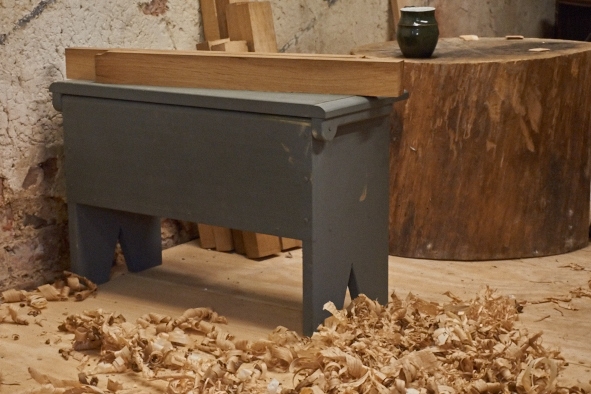
This brings me to more of the reasons why I’m a big fan of paint. I know that every time I bring a paint brush close to a piece of wood there’s going to be a certain amount of eye rolling and ‘oh no.. you’re covering over the grain’, but I like to appreciate wood as much more than a pretty face. Wood is a remarkable material …. the structure, strength, workability. The appearance is just the tip of the iceberg, so whilst I appreciate the beauty of wood, I also feel guilt free painting over it. I could paint oak and still sleep like a baby.
Simple, strong pieces of furniture may have the best potential for a long and fruitful life in today’s face paced world. In all of a Saturday afternoon, that deep red piece that has become tiresome can become crisp and classic cream in a lick of paint. When two unmatched items of furniture are brought together the varying timbers will likely be nothing but an unsightly clash, but a quick paint job to one may be all that’s needed to create harmony. I made a good living building furniture once, but I couldn’t have done it without paint.
After hailing the wonders of paint, I’m going to go and see how Helen’s getting on with rustling up a finish for my chair. We’ve opted for a linseed paint for toughness (this has always been my go to paint) and the colour will depend upon which pigments she has to hand. We’ve had a lot of interest in the dimensions for the chair since last week and so we will also bring you a brief plan as soon as possible. Helen will do a follow up with some recipes and thoughts on paint.

![Simple Work Holding For Ploughing Grooves [Without a Tail Vice]](https://www.theenglishwoodworker.com/wp-content/uploads/2022/07/workholding-without-tail-vice-copy.jpg)
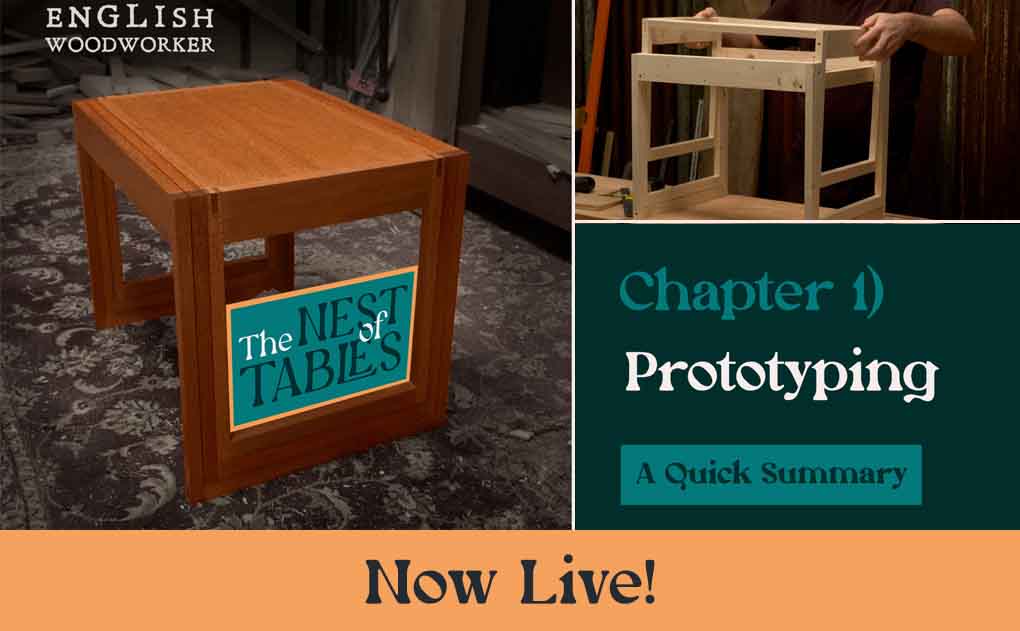
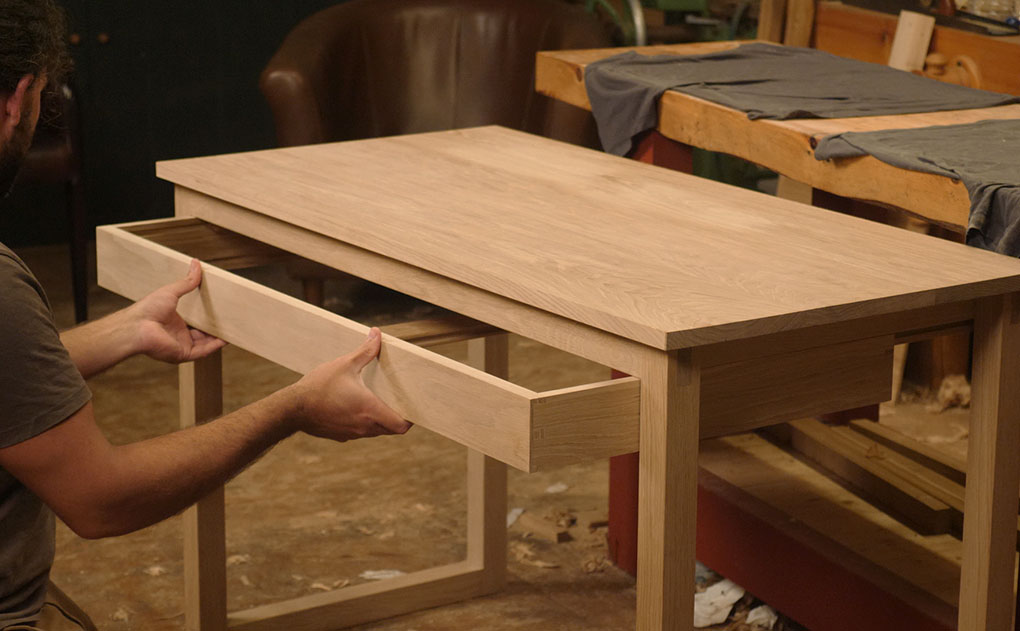
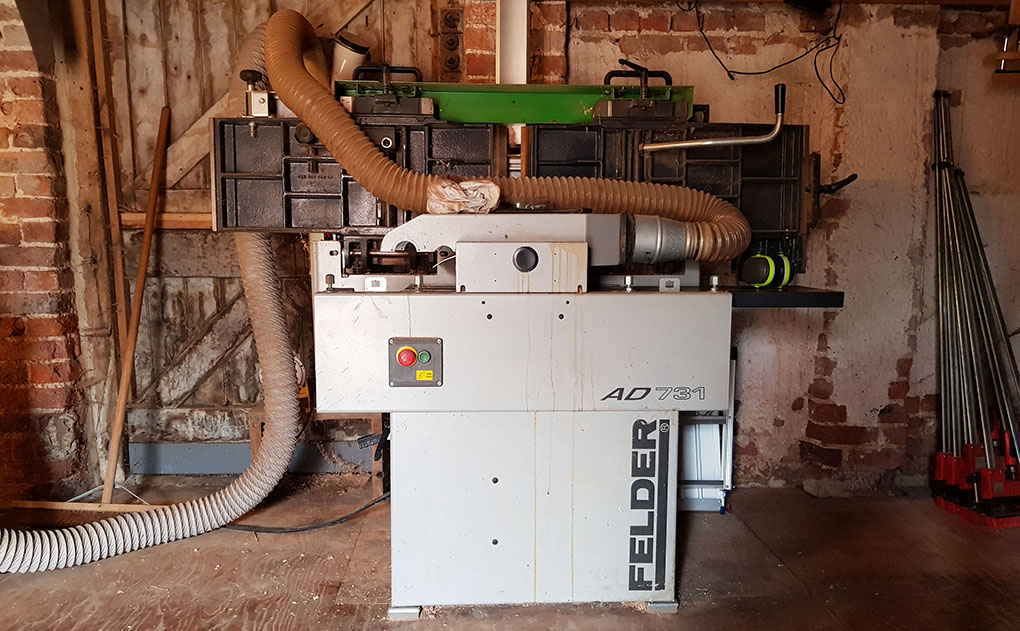
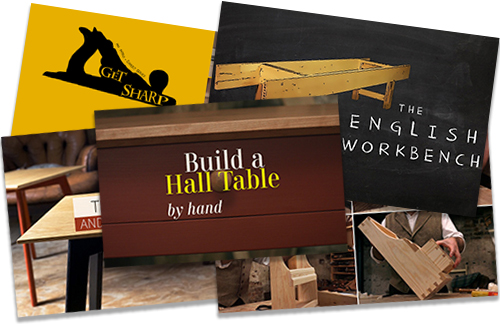
Thanks Richard, looking forward to the chair plan buddy. 😉
Interested in the nice chair plan also!!!
Look forward to the plains and the followup on paint.
I very much agree with you regarding paint. I value wood as a material (both for the particular joys of working with it as well as the material properties that it possesses) more than I value its appearance and so I do not need to see visible grain on the exterior of a piece to enjoy having wooden furniture or appreciate the work that I or someone else put into it.
Woops, meant “plans” not “plains”.
Funny you should say that about paint. I was on tight budget but needed a welsh dresser in our new house.
I build one according to my budget out of MDF, ash veneer (to match our house) and painted the main body and hutch in white eggshell and used chrome ironmongery.
Total bill – £100 for a full height ornate 4ft by 7ft dresser with draws, spice draws, shelving, doors etc.
No one believed I built it and thought it was one of those solid pieces of furniture that would cost a grand plus.
Shame it was in mdf but needs must on the budget.
It was the paint work (and the woodwork skill of course 🙂 ) that brought it all to life.
Keep up the good work!!!!
I have to say that I am very reluctant to slap paint on furniture wood, probably because my timber of choice is Oak, which is never easy to get paint to stay on, having said that I have just this week been cajoled into painting a wall cupboard door unit which is made from Mahogany, the paint job is to be one of these “distressed” jobs to make the area in which it is built lighter, ( I can always distress it a little more and take all the paint off if I do not like it)but I will not be painting the Walnut stock on my H&H shotgun!
Richard,
Paint is a great finish for common woods or a furniture piece that is a mixture of several different woods (for example a Winsor chair). Milk Paint is easy and safe to work with indoors. See the website for real Milk paint and his demonstration videos on how to build a milk paint finish with multiple layers.
Tom
Indiana, USA
http://www.realmilkpaint.com/
“Milk paint (casein paint) has been in use for hundreds of years. Documentation shows early 16th century painters recognized milk paint as having “much tenacity” along with giving a great wood finish. “ Real Milk Paint Co
The Real Milk Paint Co.
126 Commerce Drive
Hohenwald TN 38462 USA
I use milk paint as well. It’s wonderful stuff, but needs a different understanding. Much info is available on the web-thingie. I’ll layer 2 or more colors, and rub back between coats, then finish with wax or a very light polermeized oil and buff it up a bit. I like mixing milk painted and clear wood finishes, but don’t do a lot of that. If it gets paint, it gets paint.
Hi; @15 years ago I made myself a pair of Morris chairs. My father then ranted about how when he was a child his family had chopped up and burned a set of heavy ugly mission furniture, and he couldn’t stand the stuff. Given that he was raised during the depression, and they may not have had any other firewood that winter….I take it with a grain. I have difficulty finding people to buy what I make. but I’d rather make things that the user’s grandchildren will have to decide weather or not to throw out than things that will wear out before I’m dead.
K
I use milk paint extensively. Almost all the furniture I have made recently has been common furniture using cut nails as my primary fasteners. I also use lots of dados and gobs of rebates. Lots of clinched nails ( thanks Richard) and rough plane marks (thanks again Richard). The rough plane marks make a very pleasing texture when painted with milk paint. Your clinched nail toolbox set me off on a whole different path that has brought me great enjoyment. Made my toolbox in this manner but followed the Dutch tool box plans laid out by Chris Schwarz.
Will be interested to learn more about your linseed oil based paints. Also looking forward to the chair plan.
I’m following that same path, George.
It’s very easy and calming to throw away the cheap,”swinging” and a bit broken furniture f.ex. made of particleboard, MDF etc. after couple of years 🙂 If one buy valuable, 100% handmade, timeless and elegant “piece of art”, it will stay in family for many generations.
I think the case of painting is depending on “situations”. F.ex. perfect “japanese planed” surface; wooden surface is the choice of coarse. If one doesn’t like wooden surface (usually yellow soft wood; pine) or likes fine colouring overall; the painting is the choice. It’s one possibility to combine the wooden – and painted surface (f.ex. table legs painted and wooden table top).
Sometimes visible joints are eye-catchers. Straight and dense grain pattern is very elegant as well (like a painting ?). One can also use trans-parent painting; looks also very nice.
Once I paint my furniture; I’ll choose 100% natural paint and consider tints very carefully. And always will “touch” the surface with Hira Kanna.
Couldn’t agree more. I particularly like milk paint and Ann Sloan’s Chalk Paint. Sometimes paint is just the right design element.
Good to see you’re back to blogging. Regarding paint, I think I am ready for it. Never been much of a painter, but I have now bought some packages of milkpaint to transfer a not so great box, hopefully, into something nice. Wish me luck 😉
Painting pine, poplar, maybe ash, ok. Paint oak? If you are talking #3 pallet oak I would not object too much, but furniture grade oak? You mean the most abundant hardwood source we have here in the USA?
Ok, I can see that.
Just please don’t tell me you’d paint black walnut, I may start to cry.
I’d paint black walnut black. Then it could be blacker walnut
I dont see anything wrong with painting wood of any sort. Too much wood grain is just as bad as having everything painted
To paint or not to paint that is the question. No right or wrong answer, it’s a personal choice, if you like a painted Finnish, paint it. If you don’t leave it natural.
A very interesting post and it is interesting to hear peoples views on painting. Just made a 6 board chest and had the debate with a colleague about painting it.He thought it was sacrilegious to paint the chest, I’m going to paint it anyway!
I read in a book called Irish Country Furniture 1700 – 1950 that is not uncommon to find vernacular country furniture with more than 20 coats of paint. So it would seem people have being freshening up their furniture for a long time, so why not continue it.
Looking forward to the paint recipes!
Just saw your new lawn mower “George”. How cute is that little guy! Is there more than one?
I like that little bench. Have you blogged about it on your website? I searched but didn’t find anything.
Thanks